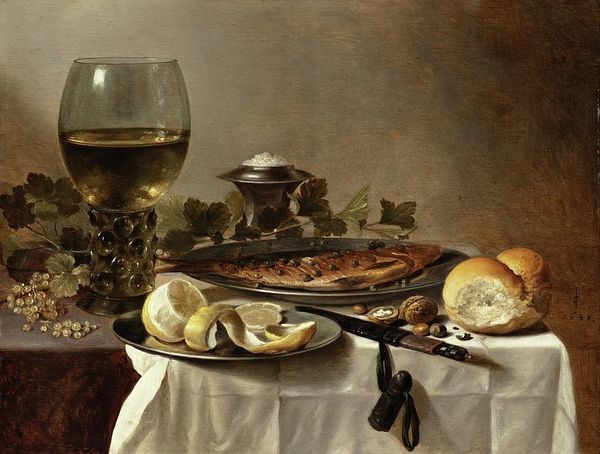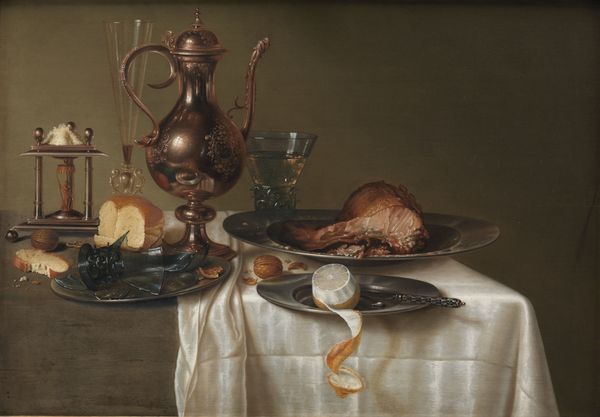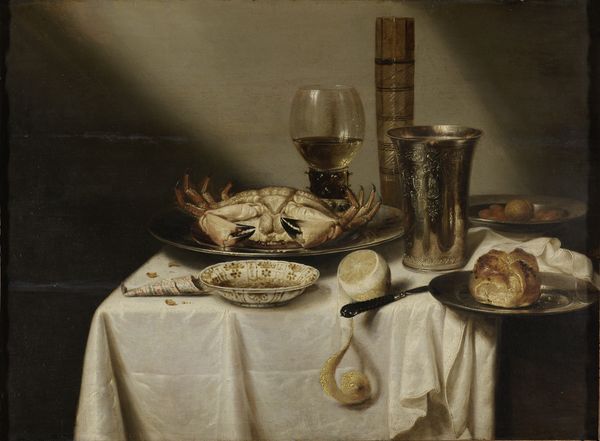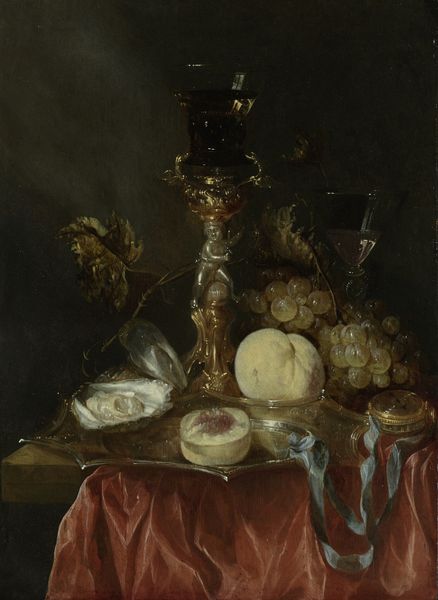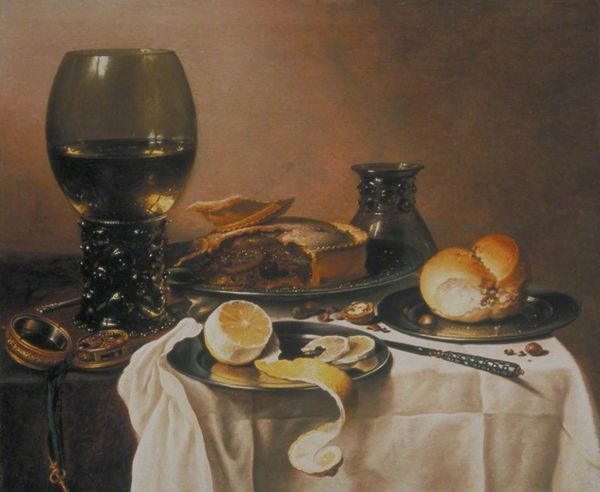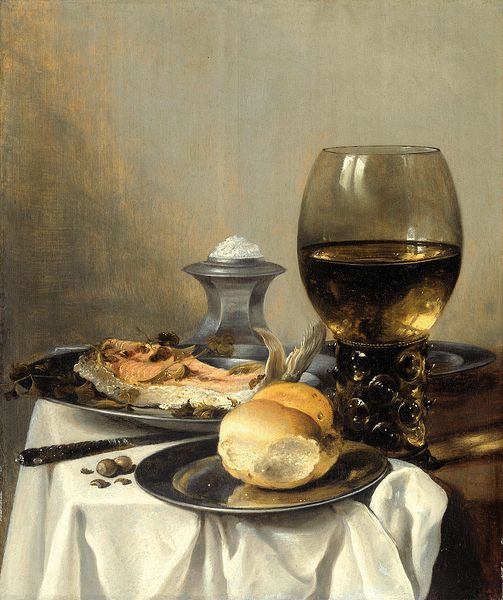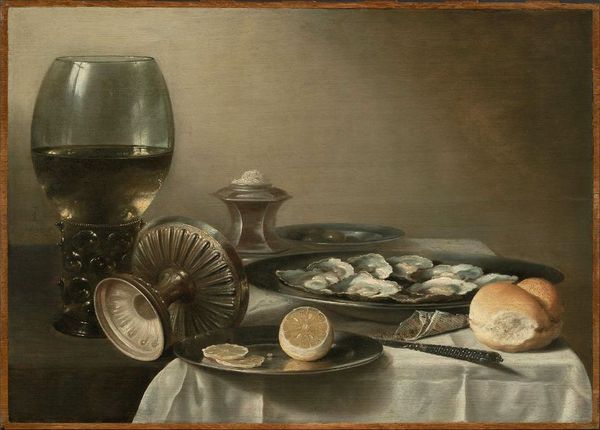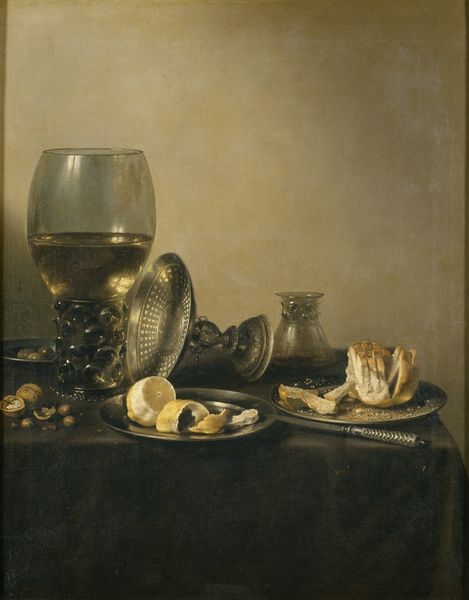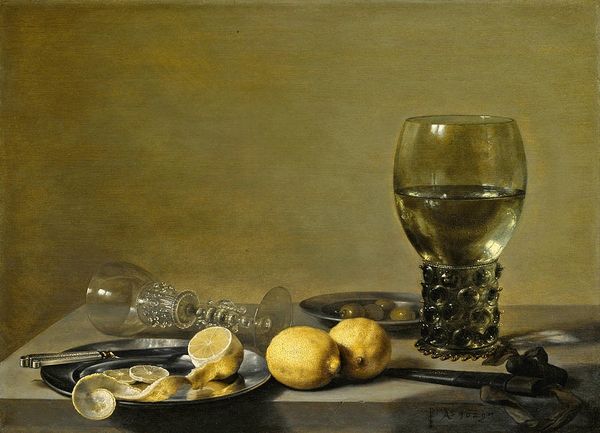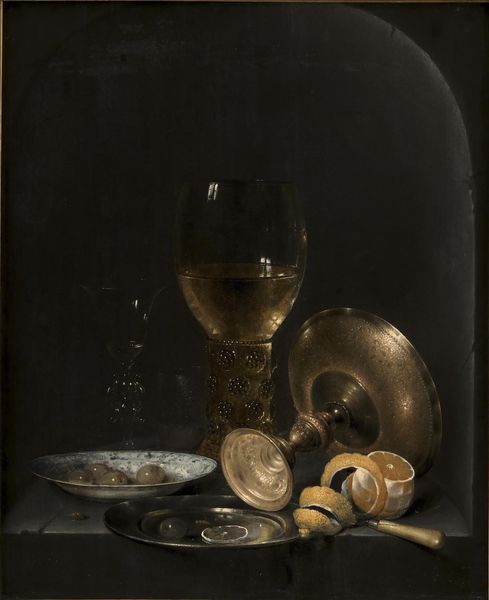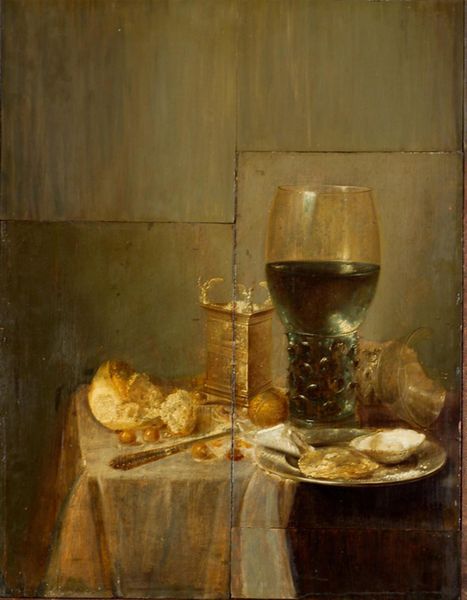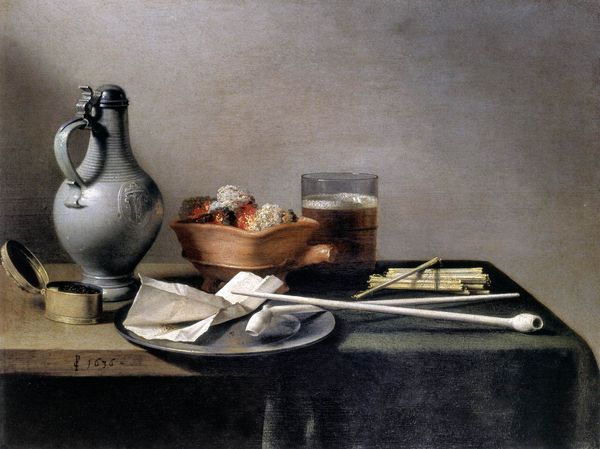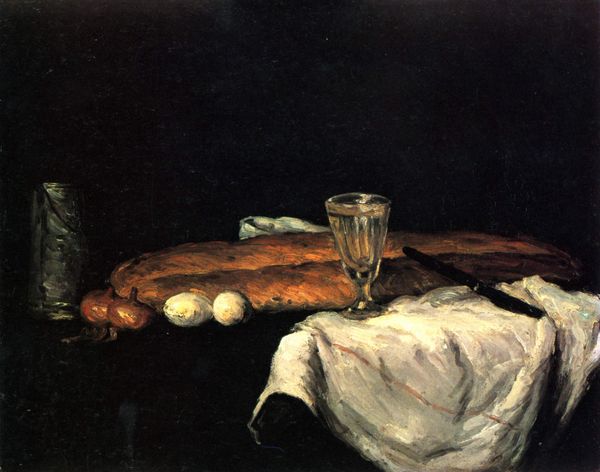
painting, oil-paint
#
baroque
#
dutch-golden-age
#
painting
#
oil-paint
#
oil painting
#
realism
Copyright: Public domain
Editor: So, this is Pieter Claesz’s "Still Life with Silver Brandy Bowl, Wine Glass, Herring and Bread" from 1642. It's an oil painting, and I find it remarkable how realistic he renders the textures. What draws your eye when you look at this piece? Curator: I'm particularly struck by the arrangement of objects, especially in relation to the socio-economic context. The brandy bowl and wine glass, crafted from precious metals and glass, signal wealth and trade networks. But placed alongside a simple herring and loaf of bread, what story about production, consumption, and social stratification do you think Claesz is trying to tell? Editor: I hadn't thought about it in those terms. It’s almost like he’s contrasting the lavishness with everyday life. The objects hint at both prosperity and necessity. Is it about the rise of the merchant class perhaps, and their access to these finer things? Curator: Exactly! Notice the process through which all this wealth becomes a kind of spectacle here in the painting; think about who owned these silver objects, who made them. Who fished for the herring, and who baked the bread. It prompts us to consider the unseen labor that fuels this opulent display. And then how does the meticulous rendering in oil paint act as a kind of 'commodity fetishism', obscuring those labor processes? Editor: It’s fascinating to consider the levels of labor hidden beneath the surface of the composition, all captured here by the oil paint itself. It really puts the ‘still’ in still life into a new light. I’m now wondering about the symbolic purpose behind depicting this moment with a slice of bread. It's almost an insight on value that is both about basic survival and lavish commodities. Curator: Yes, the fragmented loaf opens avenues for us to perceive that materiality. Now, the painting moves beyond a mere display of wealth, but acts more like an explicit engagement with the world of labour and value under nascent capitalism. Thank you, it’s nice when an artwork reveals something new. Editor: Indeed. I'll definitely be approaching still lifes differently now, considering the means of production and the societal implications woven into them.
Comments
No comments
Be the first to comment and join the conversation on the ultimate creative platform.
